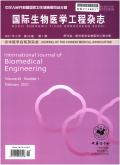Prevalence and Associated Factors of Primary Dysmenorrhea Among Debre Tabor University Students, North Central Ethiopia
引用次数: 13
Abstract
Primary dysmenorrhea is a painful menstrual cramp without any evident pathology to account for them. It is the most common gynecologic disorders and frequently observed cause of anxiety and discomfort among female adolescents. The aim of this study was to determine the prevalence of primary dysmenorrhea, its effect on academic performance and factors associated among Debre Tabor University students. An Institution based cross-sectional study was conducted between March and June, 2017. A total of 183 regular students from all departments at Debre Tabor University were included. Structured and pretested self-administrated questionnaires were used. Descriptive statistics and logistic regression analyses were employed. The result indicated the prevalence of primary dysmenorrhea was 62.3%. Among them students with primary dysmenorrhea 67 (58.7%) had negative effect on their daily activities. Family history of dysmenorrhea (AOR=2.930 95%CI: 1.505, 5.707), early age of menarche 12-15 (AOR=4.072, 95% CI. 2.039) and menstrual cycle irregularity (AOR=2.262, 95% CI: 1.102, 4,643) were factors that significantly contributed to the presence of primary dysmenorrhea. Prevalence of primary dysmenorrhea among Debre Tabor University student was high. It has negative effect on daily activities and academic performances of the students. Family history of dysmenorrhea, early age of menarche and menstrual cycle irregularity are factors that significantly contributed to the presence of primary dysmenorrhea among students of Debre Tabor University. Thus appropriate medical management and counseling should be considered to engage students in physical activity.埃塞俄比亚中北部Debre Tabor大学学生原发性痛经患病率及相关因素
原发性痛经是一种痛苦的经期痉挛,没有任何明显的病理原因。它是女性青少年中最常见的妇科疾病和经常观察到的焦虑和不适的原因。本研究的目的是确定原发性痛经的患病率,其对学习成绩的影响以及与德布雷塔博尔大学学生相关的因素。一项基于机构的横断面研究于2017年3月至6月进行。来自德布雷塔博尔大学所有系的183名普通学生被包括在内。采用结构化和预先测试的自我管理问卷。采用描述性统计和逻辑回归分析。结果显示原发性痛经发生率为62.3%。原发性痛经的学生中有67例(58.7%)对日常活动有不良影响。痛经家族史(AOR=2.930 95%CI: 1.505, 5.707),月经初潮早12-15岁(AOR=4.072, 95%CI;2.039)和月经周期不规律(AOR=2.262, 95% CI: 1.102, 4643)是导致原发性痛经发生的重要因素。Debre Tabor大学学生原发性痛经患病率较高。它对学生的日常活动和学习成绩产生了负面影响。痛经家族史、月经初潮年龄早、月经周期不规律是德勃雷塔博尔大学学生发生原发性痛经的重要因素。因此,应考虑适当的医疗管理和咨询,使学生参与体育活动。
本文章由计算机程序翻译,如有差异,请以英文原文为准。
求助全文
约1分钟内获得全文
求助全文

 求助内容:
求助内容: 应助结果提醒方式:
应助结果提醒方式:


